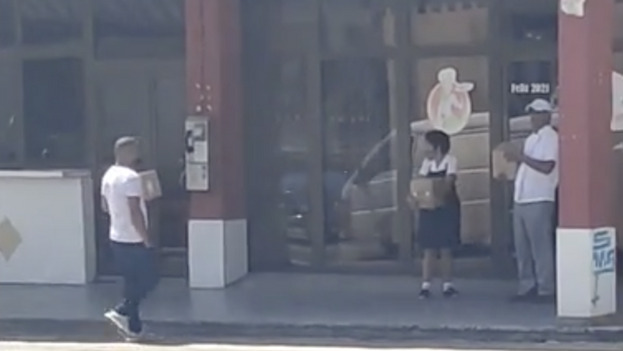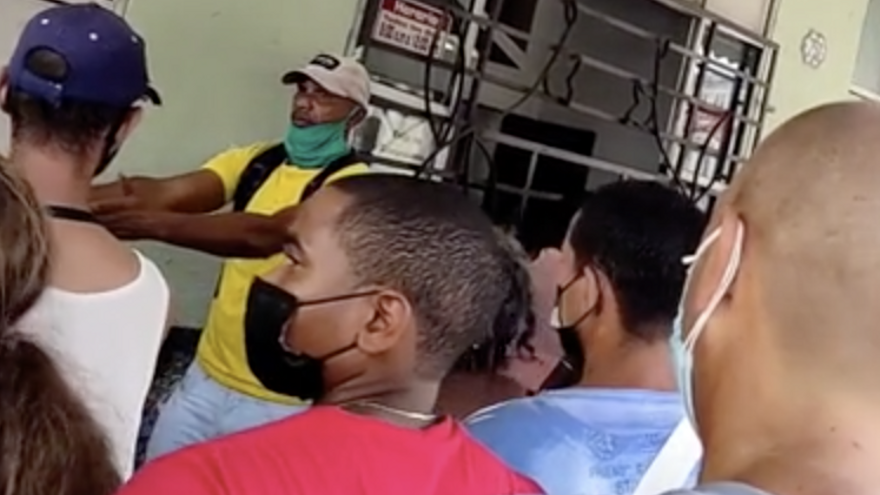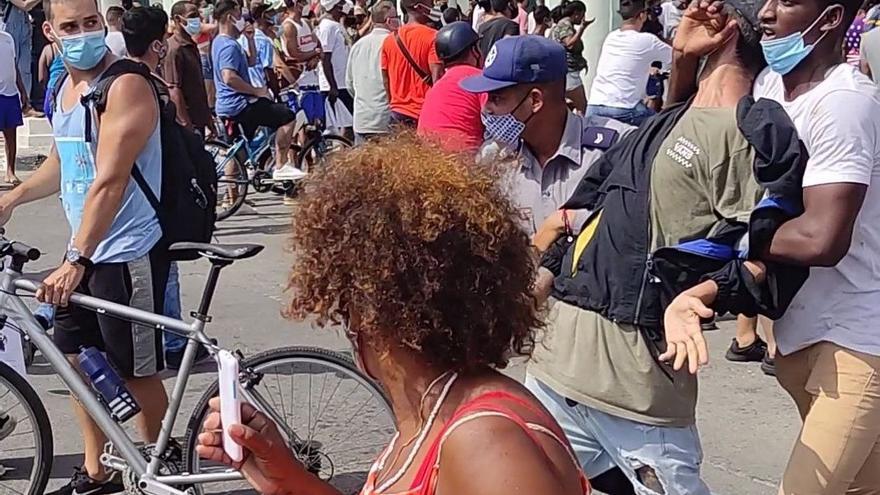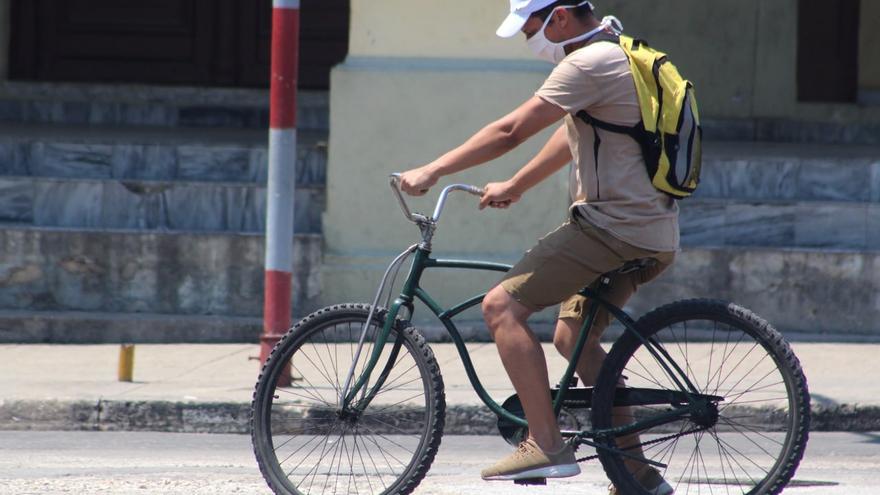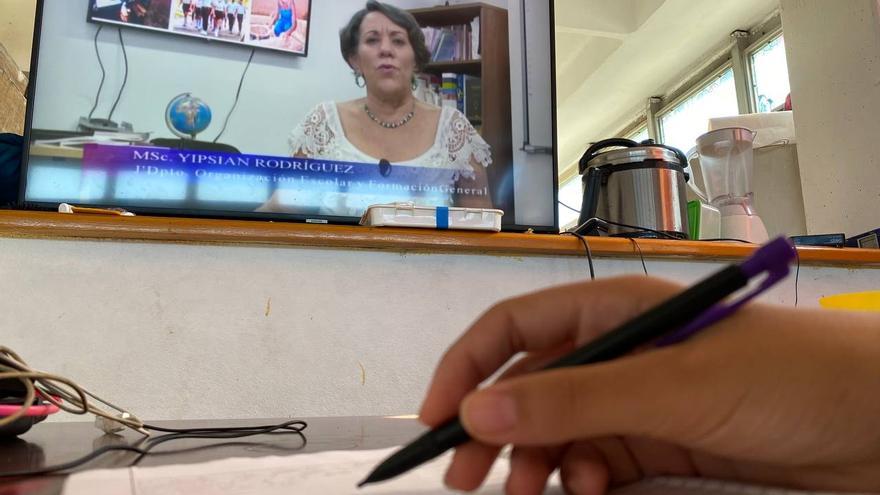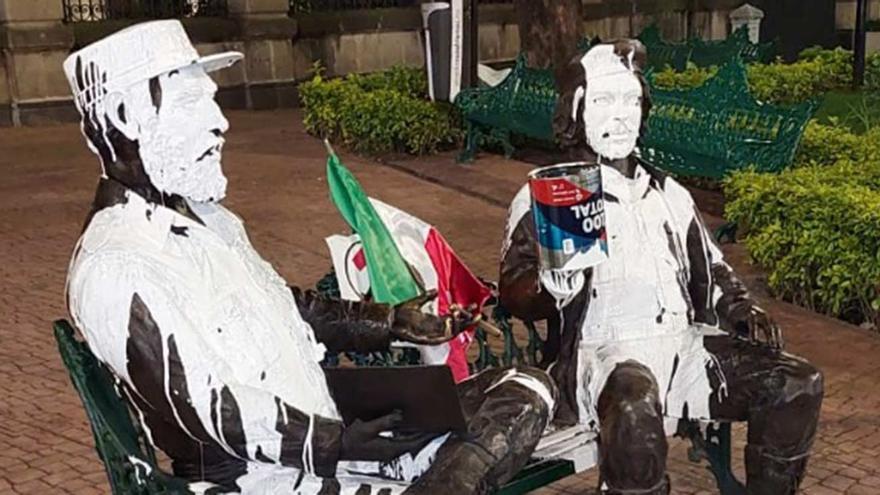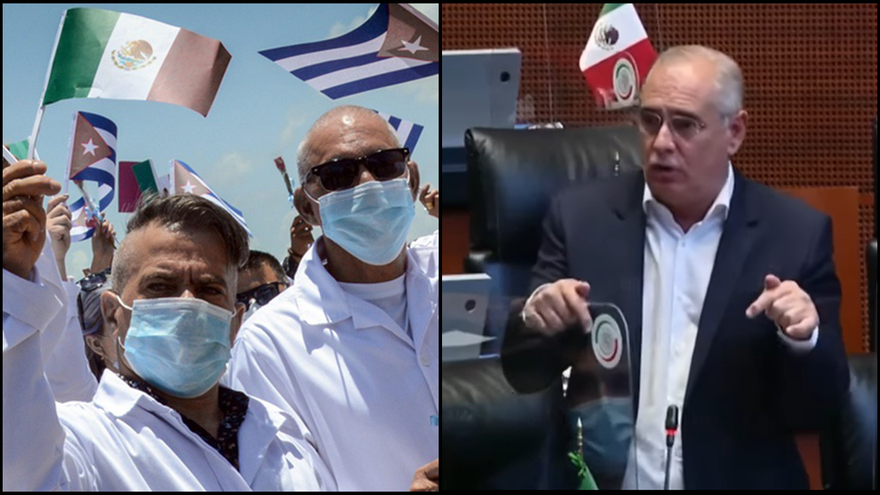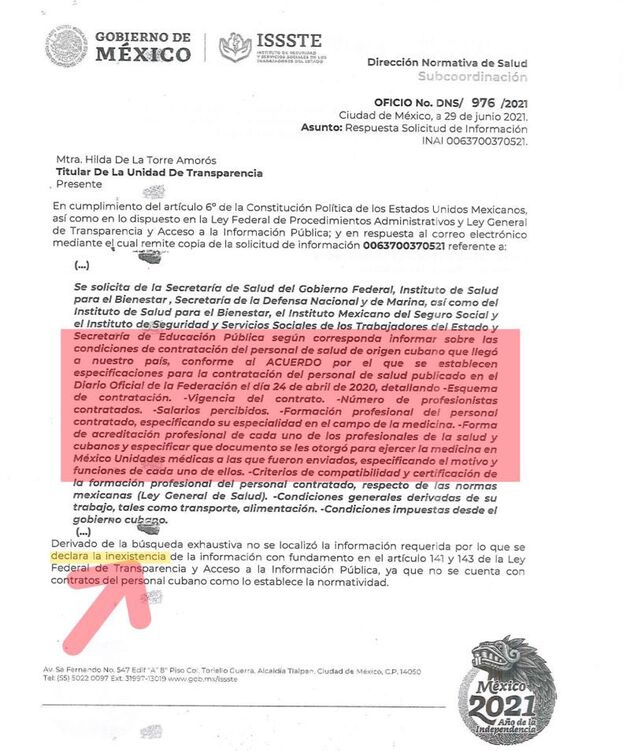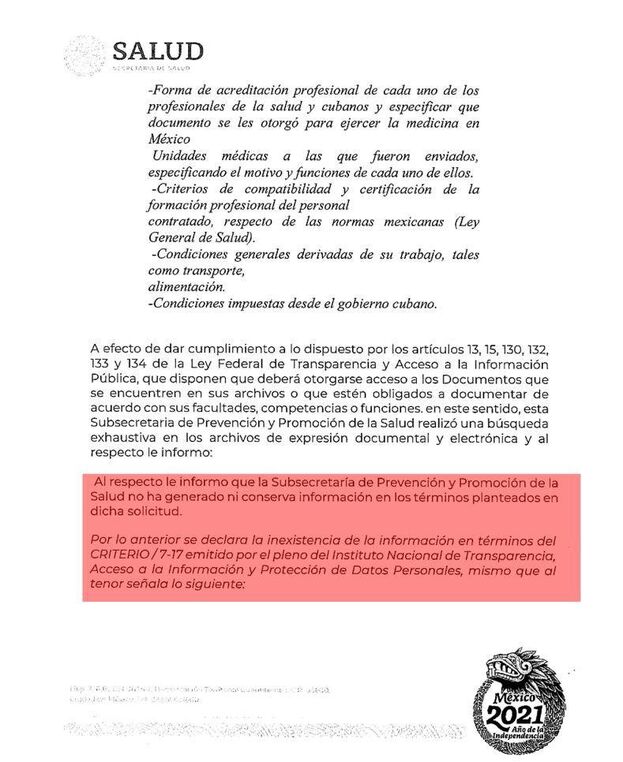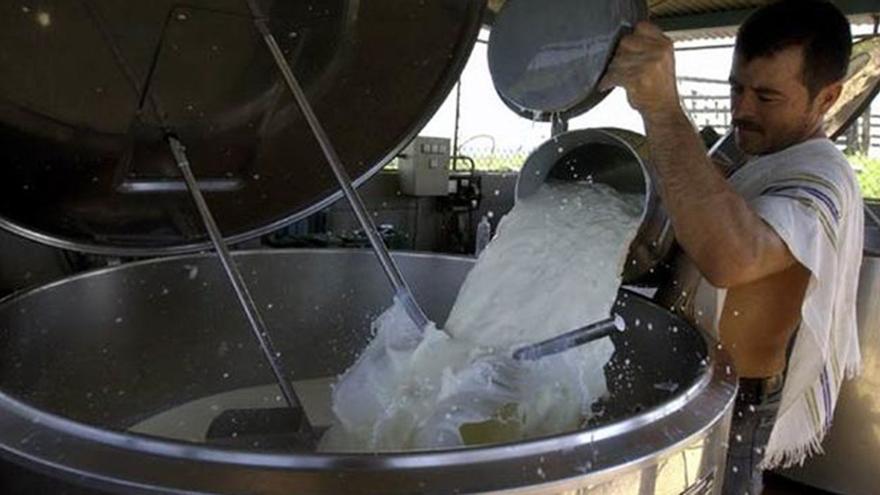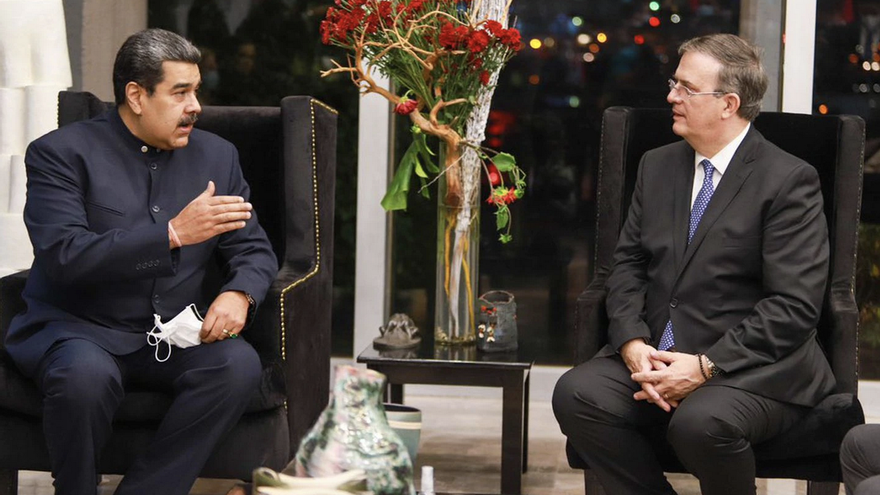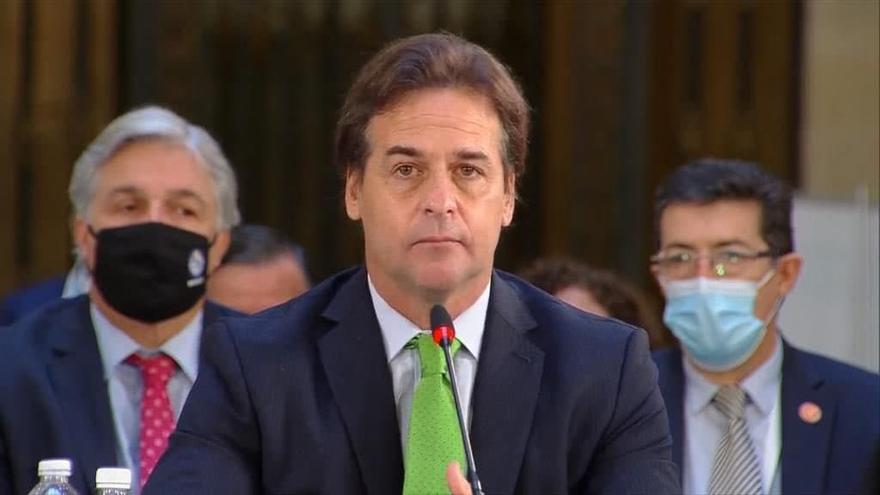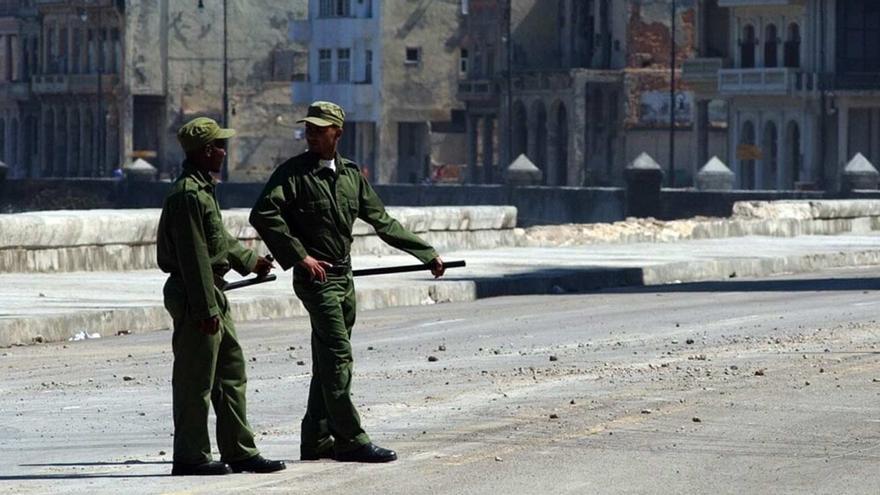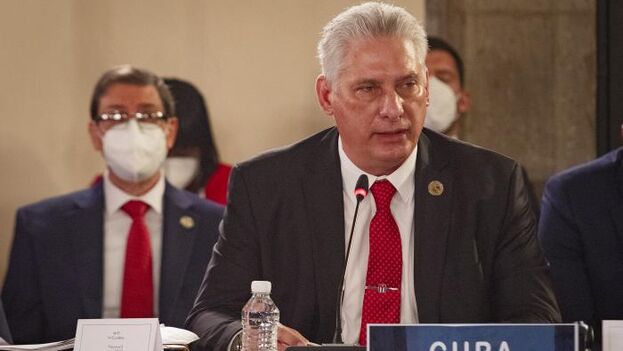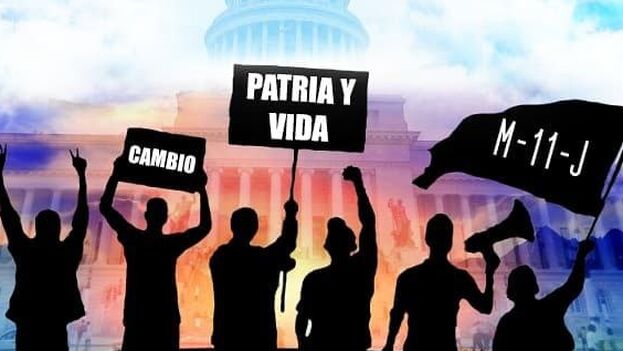
![]() 14ymedio, Havana, 23September 2021 — This Thursday in Villa Clara, about twenty citizens joined the Archipelago collective in its call to peacefully demonstrate on 20N. In addition, the thirty signatories joined the initiative this Wednesday in Holguín.
14ymedio, Havana, 23September 2021 — This Thursday in Villa Clara, about twenty citizens joined the Archipelago collective in its call to peacefully demonstrate on 20N. In addition, the thirty signatories joined the initiative this Wednesday in Holguín.
As playwright Yunior García did in Havana, citizens from Villa Clara and Holguín submitted a document notifying local authorities of their intention to march peacefully “to demand that all rights of all Cubans be respected.”
In the text they also request “the liberation of political prisoners” and that a resolution to differences in their ways of thinking be achieved through “democratic and peaceful means.”
As detailed in their requests, shared on the Archipelago’s social networks, in Holguín the march would last about three hours and would begin at two in the afternoon. Around 5,000 people would participate, marching from Loma de la Cruz to the city’s statue of José Martí. In Villa Clara, the demonstration would go from the Train Station – where, they say, “José Martí will be offered flowers at his monument” – to Loma del Capiro, passing by the church of Carmen. Some 3,000 people would participate. continue reading
In their requests they also point out that they expect “the right of the press–national and international, official or independent–to inform adequately and truthfully” be respected.
“We request that authorities guarantee: the full exercise of our human and constitutional rights; the protection of protesters against those who try to prevent peaceful demonstrations; and the normal telecommunications service during the march,” write the signatories of both texts reiterating that there is “no law that prohibits, regulates or limits the full exercise” of this type of activity on the island.
In their requests they also point out that they expect “the right of the press–national and international, official or independent–to adequately and truthfully report on the organization and development of the march.”
The group insists that the demonstration is taking place “after extensive and in-depth discussions with various members of civil society” and after the Government’s decision to open the country to international tourism on November 15. It clarifies that, therefore, the planned security measures “promote the peaceful and civic nature of the march, with absolute adherence to public order and the health measures imposed by the covid-19 pandemic.”
By sharing the documents on their social networks, they announced that in the coming days “citizens of the entire country will present similar documents to the authorities of their locality.”
The initiative to march on 20N began in Havana last Tuesday when a group of artists and intellectuals — known as Archipelago — who participated in the spontaneous demonstrations on July 11 (11J), requested authorization for the peaceful protest. The document was delivered to the capital government and in addition to García Aguilera, was also signed by filmmaker Raúl Prado Rodríguez, actor Reinier Díaz Vega and editor Miryorly García Prieto, among others.
Hours after the plans for the 20N march were made public, the regime called for a new, world-wide caravan to “demand the end of the US blockade” against Cuba.
Officialdom reacted quickly. This Wednesday, hours after the 20N march was announced, the regime called for a new, world-wide caravan to “demand the end of the US blockade” against Cuba and “the lifting of the sanctions that punish the Cuban people.”
As reported to the official press by the Cuban Institute of Friendship with the Peoples, the caravan is promoted by Cuban émigré Carlos Lazo. Lazo leads the Puentes de Amor (Bridges of Love) initiative, and recently traveled to the island from the United States, where he resides, to meet with Miguel Díaz-Canel.
The Government also mobilized State Security to defame Yunior García Aguilera through a letter on its Facebook page “Razones de Cuba” in which they call the playwright “egocentric,” “hypocritical,” “lacking national values,” “an instrument of the enemy” and “ungrateful for all the projects “the Revolution” that “he wishes to overthrow” has subsidized and awarded him.
García Aguilera, a native of Holguín and a resident of the Cuban capital, was one of the 30 artists who, on November 27 following a spontaneous demonstration in front of the Ministry of Culture, participated in the meeting with Vice Minister Fernando Rojas.
The playwright has been very critical of the regime’s repression on social media since July 11, showing solidarity with those detained after the protests. “How similar are all dictatorships! It doesn’t matter with which color they are presented to us or with which hand they give the orders!” wrote the playwright who was also arrested that Sunday along with other creators in front of the Cuban Institute of Radio and Television.
After being released, he made public his resignation as a member of the Union of Writers and Artists of Cuba (Uneac) by stating that he could not “continue to belong to an organization that turns its back on a considerable part of the people and chooses to show obedience to an abusive power of attorney. ”
As a result of July 11, García Aguilera met with singer-songwriter Silvio Rodríguez after urging him through an “open letter to the owner of a lost unicorn.” Following the meeting, according to the playwright, Rodríguez promised to “advocate for the release of all the prisoners who participated in the protests,” something characterized by the singer-songwriter himself in a later writing, where he referred to the “non-violent.”
Translated by Silvia Suárez
____________
COLLABORATE WITH OUR WORK: The 14ymedio team is committed to practicing serious journalism that reflects Cuba’s reality in all its depth. Thank you for joining us on this long journey. We invite you to continue supporting us by becoming a member of 14ymedio now. Together we can continue transforming journalism in Cuba.

